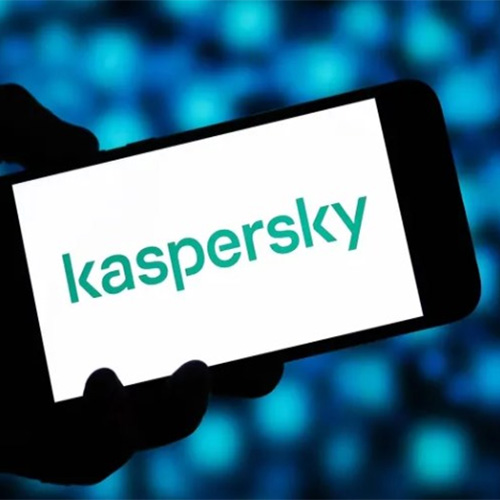Business printing going on Laser way
2010-02-17
VARIndia takes a look at how the Laser Printer marker is doing in India.
The past few years have seen laser become a more preferred option as compared to inkjet because of their faster speed, superior quality color graphics and the ability to handle complex applications. A look at the printer market suggests that the market has undergone significant change and the future holds a great deal of potential for all the vendors to expand. The laser printers have become more affordable with printers available in the sub- 5k category as well.
If one looks at the market figures, the laser printer market size is expected to be 7.6 lacs units in 2009, with Single Function laser Market expected to grow at 5 percent and MFP expected to grow at 10 percent in 2009. The companies like HP, Canon, Xerox and Samsung are therefore targeting laser printer market at large.
VP Sajeevan, Assistant Director, Consumer Systems Product, Canon India says, “Laser printer as a category is doing very well. Canon will primarily drive on laser printer category for this year 2009. Under laser printer category today, Canon is the only company in the industry offering an entry level printer with full toner capacity which truly gives value for money. For Canon, this year has been extremely good on the laser printer front. We have achieved a market share of 25% in the laser printer category and this business contributes 50% to our printer products revenue. We have grown 147% in Q1’09 over Q1’08.”
Princy Bhatnagar, Director, Office Business Group, Xerox India says, “No business is immune from the downturn impacting economies across the globe. But Xerox is better positioned than most. Big financial crunch can mean bigger business opportunities for us. Everyone will demand a higher return on investment and that is where we see the opportunity. Xerox continues to invest in improving efficiency of existing technology as a base platform. Currently Xerox offers products based on Laser, LED and Solid ink Technology. Xerox is uniquely positioned to offer such a wide platform of technologies to customers. Our focus will continue on enhancing the value proposition for the customers.”
Inkjet vs. Laser
Both technologies are meant for different kind of business needs. What’s important for business customers is to firstly determine and differentiate their printing needs and hence select the appropriate printer based on performance, print quality, affordability, networking etc. The primary goal of any printing solutions provider should be to connect customers with the best product, regardless of the specific technology.
Increased PC consumption in the home market is driving the inkjet sales where as drop in prices in the laser printers are driving its consumption in the SMEs. Digital printing is cost-effective, and opens up new avenues with features such as variable data printing which allows you to make large volumes of prints with significant differences in each printed item. World over, digital printing has changed the face of printing.
Each segment of printers has their own audience. For home users, inkjets are more preferred as it gives them colour lab quality photo prints, enables printing on various media like t-shirts etc, offers features like printing directly from digital camera, SD card etc. Laser printers are gaining momentum in the SOHO and office segment because they score high on factors like high quality prints, space saving, ease of use, value, low total cost of ownership and operational costs. And now the latest trend is that laser printers are also becoming a consumer product and getting into homes. Both technologies are relevant and its usage decides its purchase.
“Regardless of the specific technology, we connect customers with best products, and as a result, customers now not only have individual printers to choose from, but also different technologies depending on their preference and printing needs. We have the largest printing solutions portfolio for businesses of all sizes, and across verticals. From addressing the specific printer needs of the SMB segment, to providing solutions for the printing environment of large enterprises, HP has the LaserJet and Inkjet portfolio that suits individual customer needs,” says Samir Shah, Director, Laserjet and Enterprise Solutions, Imaging and Printing Group, HP India.
It is an established preference now that Home/ SOHO is where inkjet/ inkjet MFD sell in majority and Lasers technology products are bought by high print volume customers to reduce Total cost of ownership. As the market matures in the next five years one will witness more clear segmentation of the three technologies and the demand will exist purely because the technology is best suited for that segment user.
Consumer mindset
Consumer looks at Price Point along with features and the cost of printing while buying a printer. A consumer decides to buy a printer based on his need; therefore product features are usually a buyer’s first priority. As there is a slowdown in the market therefore consumers have become very cautious towards spending money on gadgets.
“We at canon focus on letting our customers experience the products, that is why Canon follows a policy of BIBLE i.e. Before I buy Live Experience. Through this policy Canon aims at allowing the customers to experience the product and then take the decision to buy the same. We are looking at the consumers who require printers for school projects, home printing. Printers would be an integral part of the family and brand choices would be made with more emotional attachment to the product segment and aesthetics would play an important consideration. Canon’s PIXMA range of single function and multifunctional devices would be a fit for this segment with functionalities like picolitre advantage, FINE printing, Chromalife 100 ink, auto image –fix etc. This quarter, we will also look at laser printers for home usage. With the election coming closer we do see a great market for printers during this time.”
Growth drivers
The key verticals that drive laser printer growth are SMBs and government. Other verticals include education. The AMI findings reveal that around two-thirds of SBs and half of MBs use laser printers. Some factors driving laser printer use are increased levels of networking and networked printers among India SMBs, and the gradual drop in laser printer prices - resulting in a reduction of the price differential with inkjets.
Home printing segment is also growing at a faster rate today. There is huge market potential in this segment.
Marketing strategy
The laser printer market is in a growing phase now. Government and consumer market is showing an upward trend, where laser printer is showing a growth of over 150 percent.
Canon largely focuses on its channel strategy, hence it becomes extremely important to educate and motivate the partners to work hand in hand with it. Canon also believes that the channel partners should be well informed about the intricacies of the product to give the buyers accurate demonstration about it. To support the thought Canon had executed ‘Gyaan Yatra’ in over 84 cities to train its partner with in depth knowledge about the technology.
“We also have an online portal called PEPSY which stands for Partners Excellence Programme Secondary for partners to maintain their database of sales, schemes, targets etc. For 2009, our focus is Canon GMOL (Gain More Out of Left) where we dare and we want to bank on our edge to ensure that the company & its channel partners can lead the printing industry to profitability,” informs Sajeevan.
“We are already planned by engaging with Channel Partners, Large System Integrators & Corporate Partners to address the market,” said Ranjit Yadav, Director-IT Business, Samsung India.
HP focuses on helping SMB customers uncover hidden value and cost savings opportunities from the imaging and printing environment. According to IDC, the focus for businesses this year will be to leverage IT to achieve business process optimization to reduce cost, and improve efficiency and productivity.
Shah adds, “The new HP line-up enables SMBs to manage operating costs, improve productivity and invest in efficiency to stay competitive. For SMBs, HP has a 3-part strategic approach to how we enable their business goals:
· Start Simple – Help SMBs start with just the printing basics of keeping their business running with easy-to-use, quality and affordable imaging and printing products
· Work Smarter – SMBs save money and improve productivity with imaging and printing products and solutions
· Grow Faster – help SMBs prepare for future growth and enable greater differentiation where HP can help simplify their business processes and improve their marketing communication.”
Partner Opportunities
Demand for peripherals is increasing day by day and the industry has witnessed huge growth during 2008. There is a lot of potential and latent demand in the PC peripheral market in India, which will steadily rise after the demand from tier III and tier IV cities also picks up.
Samsung motivates the partners by offering the Samsung Products which are high on features and low on Price, additionally they have aggressive Channel Margins, which means that partners can earn big margins by selling Samsung products.
Canon is highly optimistic in exploring tier III and tier IV markets. Its goal this year is to achieve 30 percent over last year.
“At Canon we partner the best and believe in overall partner excellence. We have a number of plans for this year, which include quarterly schemes wherein we offer huge differential in our margins for partners to keep them motivated. Canon plans to aggressively link all secondary channel partners through Partner Excellence Program- Secondary (PEP-SY). This program will help incentivise partners and to be connected directly. We at Canon believe in establishing and sustaining relationship with our channel partners. This helps us in creating a robust channel network across the nation. We keep introducing initiatives and schemes to educate and motivate our channel partners. The opportunity for the partners in this case, is in terms of growth and incentives,” says Sajeevan.
Growth Opportunities for Vendors
Samsung is looking at 25 percent market share in 2009. Canon currently holds 15 percent market share in the inkjet printer segment and 25 percent in laser printer segment. Canon’s goal this year is to grow at 30 percent over last year.
Considering that there is an immediate need for businesses to make the best use of resources available to them, both SMBs and large enterprises are looking at saving costs, and going green. Adds Shah, “Our growth opportunity comes from the fact that these companies are looking at partnering with IT solutions providers to leverage their existing imaging and printing environment, and also adopt new printing solutions that will help them save costs during today’s difficult economic times.”
Growth has determined the following trends in organizations:
· Adoption of MFDs: As business demands increase, the printer is morphing beyond its core functions, offering customers more value for money – and is rapidly evolving. MFDs are increasingly redefining office life, helping organizations to consolidate investment, maximize space and simplify workflow processes. MFDs also simplify supply ordering and minimize maintenance calls, saving time, money, and critical resources for SMBs and enterprises.
· Going green: With small and medium businesses implementing green IT within their organizations in order to save costs and energy, companies are paying more attention to the products and services being used within their offices. Keeping this in mind, HP introduced a number of new printing solutions under its Cost Saving Platform in March ’09 that can help companies dramatically drive down business costs with the new HP Officejet Pro series which deliver up to 50 percent cost-per-page (CPP) and energy savings compared to laser printers. Moreover, HP’s new LaserJet devices with Instant-On Technology can save up to 50% on energy use.
· Creation of in-house collaterals: SMBs are moving away from third party vendors to produce marketing collateral in-house and as a result, significantly improving their overall marketing effectiveness. Printing marketing collaterals have multiple benefits, including cost savings (allows users to print only how much they require), content security, and increased marketing flexibility that allows businesses to respond to changes quickly and easily. SMBs are also realizing the importance of customized marketing materials for greater impact.
· Adoption of colour in office: Businesses today view colour in the office as a necessity, not a luxury. Rising print speeds and falling costs have made colour printing an integral part of successful businesses. Impressive proposals, professional sales presentations and clear reports deliver measurable results and positively impact your bottom line. HP also offers a number of colour printing solutions that add impact and clarity to business documents.
Also, in the near future, companies will become more cost conscious with regards to their printing and imaging environment. HP expects that its growth will come primarily from these factors.
Future
As the world becomes increasingly ‘connected’, the printing and imaging industry has had to adjust its technology and offerings for a new, increasingly Web-centric era. MFPs are expected to lead the growth.
As printing needs become less PC-centric and more Web-centric, enterprise customers will harness the Web as a primary platform and the printer sector has to adjust accordingly. Small and mid-sized businesses will look for customized solutions that will allow them to optimally exploit their printing and imaging infrastructure; for this, they will partner with printing solutions partners who can offer marketing design tools such as templates, logos etc. The ability to unshackle the printer and allow it to link wirelessly with the PC will also be a key trend that will increase user friendliness in the coming times.
As environmental issues become more pressing, companies will look at adopting ‘green’ solutions, and the printing industry will have design appropriate solutions to satisfy customer aspirations. Another technology that is increasingly making an impact across verticals is ‘touch’, as it makes for easy user interface and resonates sleekness and style.
Another focus would be on up- countries seeing the education and health segment growing in these areas. Canon has an entry level A4 scanner specially designed for villages. These can even scan A3 size papers. Laser printers getting into consumer homes is also a trend which will surely gain momentum this year.
“Our main focus in the year 2009 is on technology. We believe our customers deserve the best technology. Technology trends in the image capture segment can be seen in the features and aesthetics of the digital cameras. Consumers are looking for the latest in technology and are constantly upgrading. IT products have become lifestyle products, and hence aesthetics of the product also play a major role. Customers want a complete digital experience from their products. Keeping this in mind Canon is continuously introducing new products in the market to provide customers with the latest in cutting-edge technology,” concludes Sajeevan.
See What’s Next in Tech With the Fast Forward Newsletter
Tweets From @varindiamag
Nothing to see here - yet
When they Tweet, their Tweets will show up here.





























